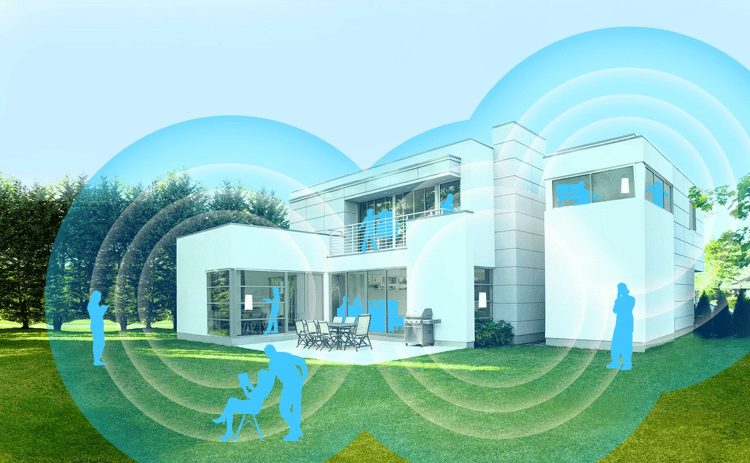 Mesh networks give your home Wi-Fi setup a boost using extra boxes that give the signal a kick as it passes through. They don’t magically give your home a connection it didn’t have before, but rather extend the connection you already have, further. So if your home is large, or you need to extend your Wi-Fi beyond the router’s current capabilities, a Mesh network is probably just the thing for you.
Mesh networks give your home Wi-Fi setup a boost using extra boxes that give the signal a kick as it passes through. They don’t magically give your home a connection it didn’t have before, but rather extend the connection you already have, further. So if your home is large, or you need to extend your Wi-Fi beyond the router’s current capabilities, a Mesh network is probably just the thing for you.
What exactly are mesh networks?
In your average Wi-Fi setup, the router spreads the signal as far as it can within your house. Every wall, carpet, door and other obstacle will weaken the signal however, which means that some rooms will provide better coverage than others.
This is where mesh networks come in: they are extra boxes (nodes) that sit around your house, picking up the internet signal and taking it farther, including places that were impossible to reach before. They are able to eradicate black spots and maintain a much higher level of throughput than a single router can maintain.
How does a mesh network work?
Mesh networks are comprised of a base station (which connects to your broadband modem), and nodes (which are placed around the house). The base station exchanges information continuously with the adjacent nodes and the nodes also exchange information with each other. This allows nodes that aren’t sending and receiving data to each other to still know all about each other.
Mesh networks don’t retransmit all the data passing through among a set of base stations. Instead, they dynamically adjust radio attributes and channels to create the least possible interference and the greatest possible coverage area, which results in a high level of throughput.
In some cases, a mesh node might send a packet of data to just one other node. In others, a weak signal and other factors might route the packet through other nodes to reach the destination base station to which the destination wireless device is connected.
The ultimate goal of a mesh network is to make sure as much throughput remains reserved for actual productive traffic, such as streaming 4K video from one end of a house to the other, relative to that consumed by moving data around the network.
You typically rely on a smartphone to help set up the first node and network parameters and add additional nodes to an existing network. Because you don’t have to plan where mesh nodes go, mesh systems automatically reconfigure as you add nodes. Most of the systems available offer help in figuring out where to locate units, either by using indicators on the nodes themselves or smartphone software.
What comes next?
The future of mesh isn’t more and more nodes. Rather it is nodes that have more and different kinds of radios and other features built in. Some mesh nodes already have Bluetooth for configuration and personal area networking control, and up to three Wi-Fi radios supporting the full 802.11a/b/g/n/ac range.
But what we have today, available to buy right now, is a practical way to extend your home network. And with Internet of Things likely to make all sorts of objects and devices in your home ‘connected’, it is safe to say that mesh networks haven’t arrived a second too soon.
About VTSL
VTSL is a leading VoIP business phone system provider in the UK & Ireland, specialising in hosted telephony solutions for medium sized businesses. VTSL’s solutions allow businesses to work smarter and faster, with integrations for CRM systems, email, browsers and more. Offering low per user monthly billing, and bespoke solutions for all clients, it is no wonder VTSL was chosen as the Best Business VoIP Provider by ITSPA. Learn more by calling 020 7078 3200 today or by clicking here for a free consultation and quote.

